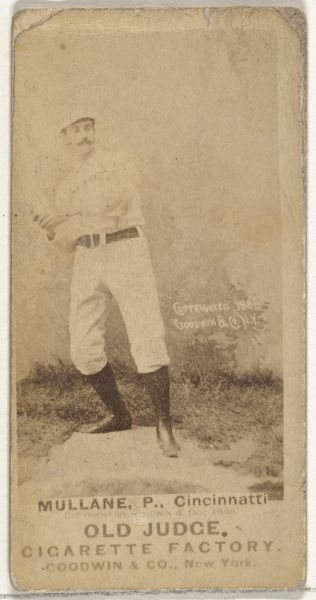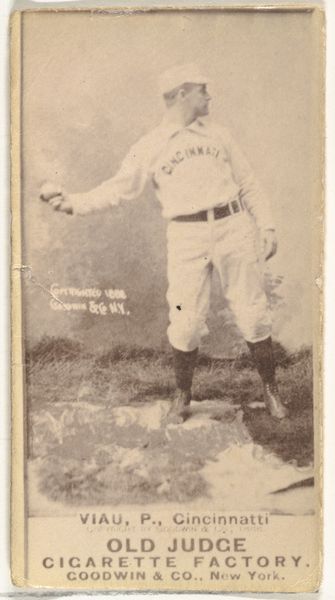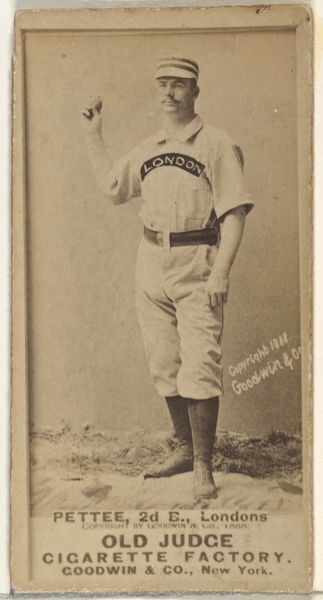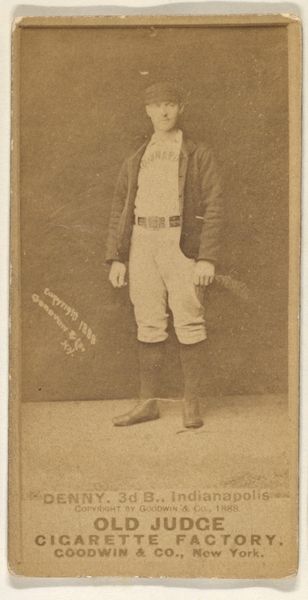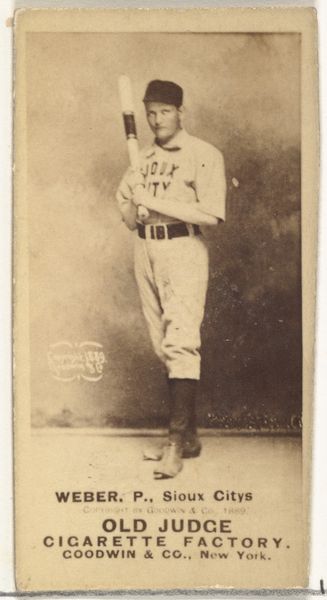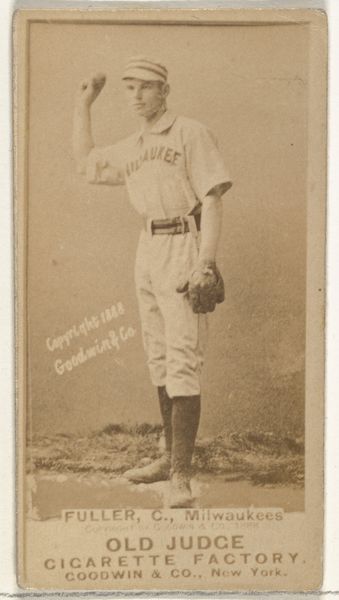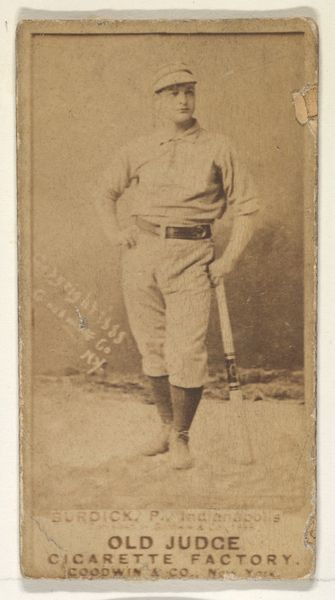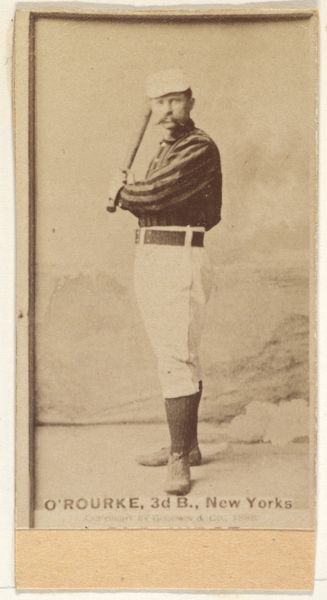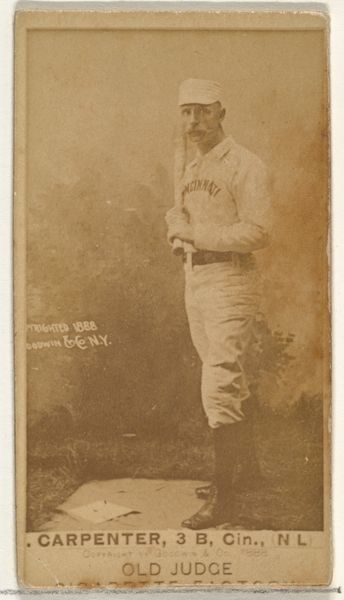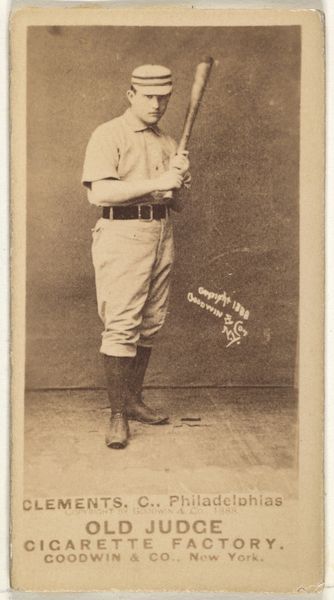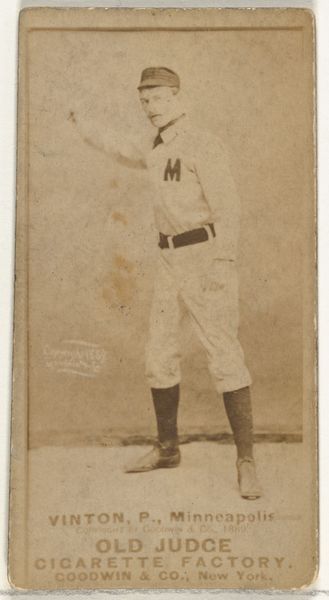
Anthony John "Tony" Mullane, Pitcher, Cincinnati, from the Old Judge series (N172) for Old Judge Cigarettes 1888
0:00
0:00
drawing, print
#
portrait
#
pencil drawn
#
photo of handprinted image
#
drawing
#
aged paper
#
toned paper
#
light pencil work
#
photo restoration
# print
#
old engraving style
#
baseball
#
19th century
#
men
#
watercolour illustration
#
athlete
#
watercolor
Dimensions: sheet: 2 11/16 x 1 3/8 in. (6.9 x 3.5 cm)
Copyright: Public Domain
Curator: Before us, we have a baseball card from 1888 featuring Anthony John "Tony" Mullane, a pitcher for Cincinnati. This print, part of the "Old Judge" series, was created by Goodwin & Company for their cigarette brand. Editor: The sepia tones give it such an archaic feel, almost like a daguerreotype. There's this stillness that contrasts comically with the expectation of a dynamic baseball scene. It feels less about sport and more like documenting a stoic figure in an elaborate uniform. Curator: Indeed, the photographic approach here emphasizes the sitter, drawing attention to Mullane's posture and the arrangement of elements within the frame. Note the tonal gradation from the dark leggings to the off-white baseball uniform, creating a subtle, yet structured composition. Editor: Right! He’s got this carefully cultivated air, which is funny because you know these old-timey players were probably rowdy. This almost cherubic face on a ball field—it's fantastic. Plus, the backdrop just fades into nothing; it's less a place and more of a vague suggestion of "outside". Curator: That absence of a clearly defined background isolates Mullane, imbuing him with a sense of timelessness—removing him from a specific context and elevating him to a symbolic representation. It underscores the commodification of the player himself. Editor: That makes perfect sense. He's forever caught in the Old Judge cigarette amber. So, what begins as a commercial object morphs into something more... melancholic? This attempt at preserving the now-past baseball player as something collectible seems weirdly profound now. Curator: Absolutely. The subtle nuances—the slightly worn edges, the aging of the paper—they speak volumes about the passage of time, about the ephemerality of fame, even the shift in baseball’s cultural status since the 19th Century. Editor: You're right, it hits on so many levels; from its commercial intentions to these accidental layers of cultural nostalgia, it winds up speaking volumes. A lucky find, if I might add.
Comments
No comments
Be the first to comment and join the conversation on the ultimate creative platform.
